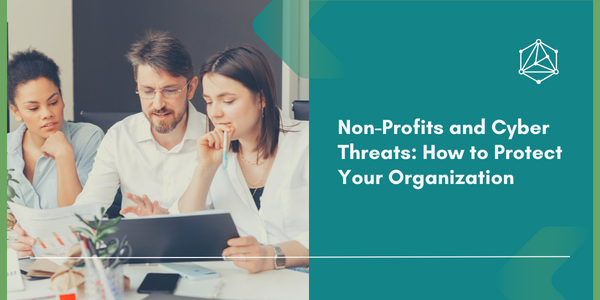Over 50% of all businesses and 27% of non-profit organizations have been victims of cybercrimes in the past year.
Each week during the first quarter of 2023, one in thirty-one organizations worldwide faced a ransomware attack.
More than 55% of non-profits don’t require multi-factor authentication to log into online accounts.
65% of large humanitarian organizations believe their cybersecurity practices are inadequately managed and 59% feel they are underfunded.
There is a lot at stake for non-profit organizations when it comes to technology and data security. As the statistics above illustrate, organizations can’t afford to take cybersecurity risks lightly.
The following tips will help your non-profit avoid cyber threats, but a robust cybersecurity plan often requires additional help from external IT experts. The more plans you have in place to safeguard your organization and prevent cyber risk, the better.
Build Layers of Security
One way to mitigate the risk of cyber threats is to employ a layered security approach. Layered security deploys multiple security controls to protect the most vulnerable technological components where a breach or cyberattack could occur. Often, a firewall is the first line of defense, acting as a barrier between a trusted network and an untrusted network, and only letting network traffic occur that passes the pre-set security policy. However, vulnerabilities can still form as software ages or updates aren’t applied, creating gaps in security and easy access for hackers.
Building your digital security in layers is one of the key ways to prevent hackers from accessing your data. A breach is less likely to occur when a cybercriminal has to get through multiple levels of security. These layers work together to bolster your defenses. In addition to a firewall, essential security layers include multi-factor authentication, email filtering, web content filtering, a sophisticated password policy, security training, and phishing simulation training.
Choose Long Passwords
A complex password that contains lowercase letters, uppercase letters, numbers, and special characters just isn’t necessary. The professor who came up with those password rules now says he was “barking up the wrong tree” with his password guidelines.
The longer the password, the harder it is to crack. The more characters a cybercriminal has to guess, the smaller the odds of guessing each character correctly. We recommend using a passphrase rather than a password, like “BigRedPizzaTruck” or “FlyingWithChipmunks”. These phrases are fairly easy to remember, and because of their length, are more secure.
Invest in Anti-Ransomware
There are many products available in the marketplace that do a great job of preventing ransomware and other harmful viruses. Sophos and Malwarebytes are two that we recommend. These products tend to be ahead of the curve in fighting malware-as-a-service threats and some of the more remarkable attacks such as the KRACK Wi-Fi vulnerability and the WannaCry ransomware.
The top echelon of products employs deep learning capabilities, such as behavior blocking, to continually evolve against criminal activities. Behavior blocking, also known as sandboxing, is the ability of an antivirus program to look for a variety of suspicious behaviors from a program and shut it down immediately when detected. Viruses often change their signatures each time another user encounters them, so the ability to detect suspicious activity is essential.
Stay Vigilant Against Email Scams
Email is by far the preferred method for cyberattacks, with 94% of malware delivered using this vehicle, according to a recent report from Verizon. Protecting against email threats is as much about training as it is about technology. Email attacks are usually carried out using social engineering, or phishing, to convince unsuspecting users to take action. They may ask the user to download a file or click on a link. Hackers may disguise links to malicious websites in innocent-looking buttons or URLs. It’s important to hover over a link before clicking it. While hovering your mouse over a link, you can see the full URL and determine if it’s safe to visit. Non-profits must be wary of these attack methods and provide training on how to securely use email.
With these things in mind and practice, your organization will be more protected against the ever-present and growing threat of cybercrime. Be sure to subscribe to our blog to get breaking cyberattack updates, expert insights, and more! Need help adding layers of protection for your non-profit? Reach out to us!

